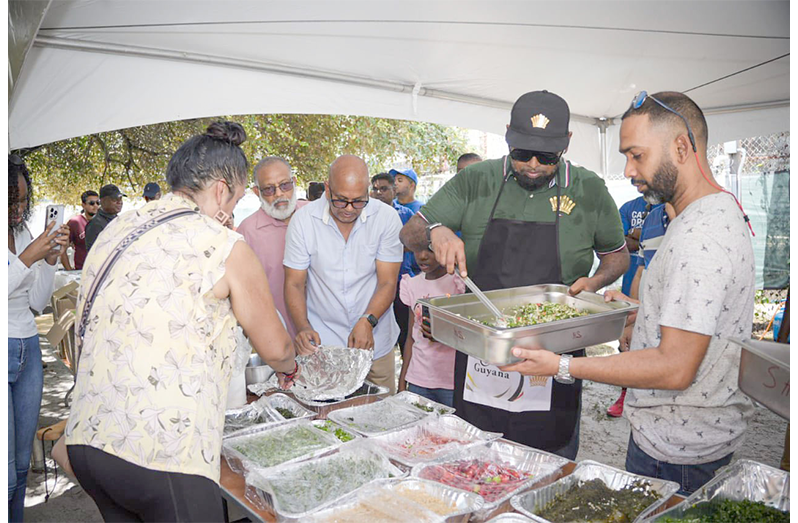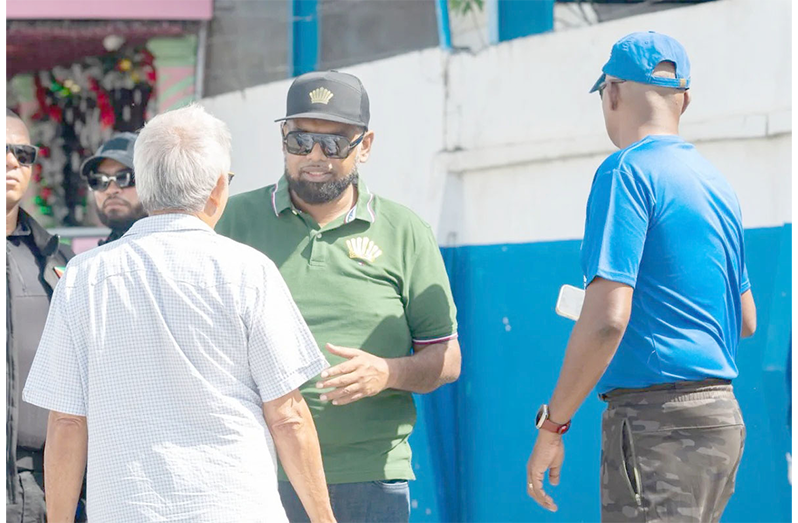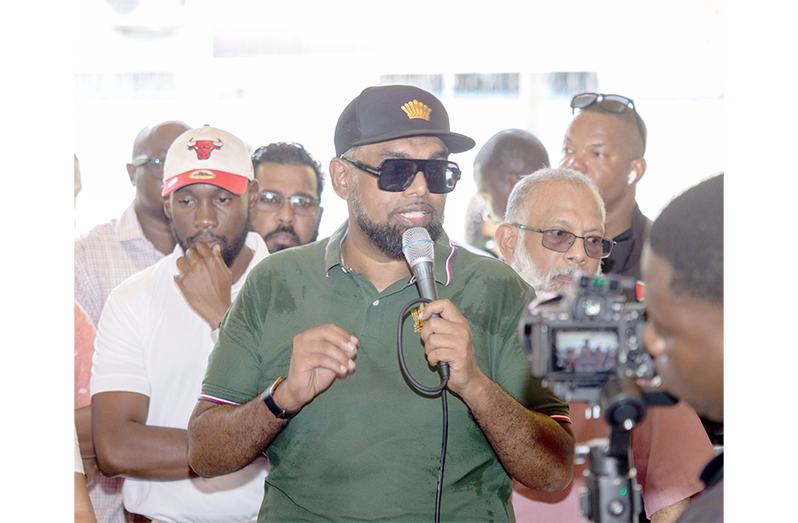–President Ali says urban renewal, strengthened security, new recreational areas among plans
–urges residents to collaborate with gov’t, other partners to remove societal stigma
PRESIDENT Dr. Irfaan Ali on Sunday morning outlined an ambitious plan to transform Tiger Bay and nearby communities into Georgetown’s first ‘model neighbourhood’ through a pilot programme that will prioritise community love, security, and social welfare.
Addressing residents shortly after a walk through the communities, President Ali emphasised that safety and collaboration would be central to the initiative.
He explained that the revitalisation effort will include improved public spaces, strengthened security, and a push for residents to take pride in protecting and maintaining their surroundings.
“We are going to work with the community in creating community ownership, community security, because you will have to help us and the police to keep these communities safe; clean,” he said.
Already, a committee led by Minister of Local Government and Regional Development Priya Manickchand has been established to engage residents, and oversee works in Tiger Bay.
This is a part of the government’s ‘Rescue Georgetown’ initiative, which is an ambitious plan to restore the city to its historic reputation as “The Garden City”, while advancing sustainable urban development.

The plan outlines 15 landmark demonstration projects that will focus on ‘green’ infrastructure, climate resilience, and the celebration of cultural heritage.
Particularly for Tiger Bay and the surrounding communities, President Ali said: “We want this community to be a safe community, because part of the ‘Rescue Georgetown’ programme is to make this route all the way from the seawall coming all the way here, going to Avenue of the Republic, going down to South Road, back into the Botanical Gardens, the walking tourism lanes of Guyana.”
The goal is to foster neighbourhood unity and sustainability. Key initiatives include working with a family to monetise their lands, improve housing, develop community facilities, and integrate social services for women and children.

He noted that three plots of land have already been identified to construct a recreational facility outfitted with football and basketball courts and night lights.
This land was donated by the owner of Mattai’s Food Market, a well-known supermarket in the area. The owner has since committed to employing more residents from the community.
Meanwhile, School of the Nation will work closely with the community’s children, integrating the already existing schooling and programmes in the community.
The Men on Mission (MoM) team has been identified to continue its extensive community support in the area, particularly as it relates to housing and social programmes.

“We are launching, as part of the ‘One Guyana Programme’, a neighbourhood love programme, where the entire community will work together as one unit. Why is this important? This is important because you can have one of the nicest parts of the neighbourhood lose value because another part of the neighbourhood is not so [nice]. We want the entire neighbourhood to work together to help us to lift the entire neighbourhood.”
‘WE ARE GOING TO REMOVE THE STIGMA’
President Ali said the government will invest in all the required infrastructure, including trucks and bikes, to help maintain security in the area. According to him, the construction and renovation of buildings, along with plans for craft shops, small business centres, and new restaurants and bars will create meaningful economic opportunities for residents.
“…the most important thing is people must know they are secure, they’re safe. And, we have to be honest, we have to remove a big stigma here, and we are going to remove it as a neighbourhood of love,” President Ali said.

Just last week, the government began public consultations under the Georgetown Drainage Improvement Project.
The plan to rehabilitate the city’s ageing drainage system has adopted a strategic and multi-agency approach, targetting some of the critical areas prone to flooding due to infrastructure deterioration.



.jpg)










